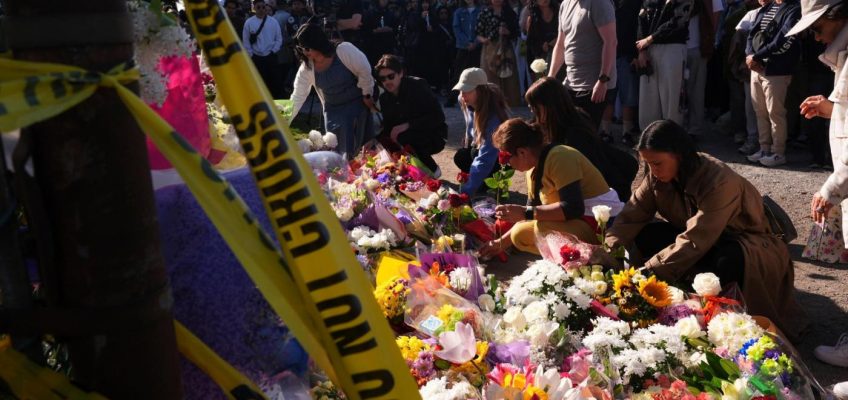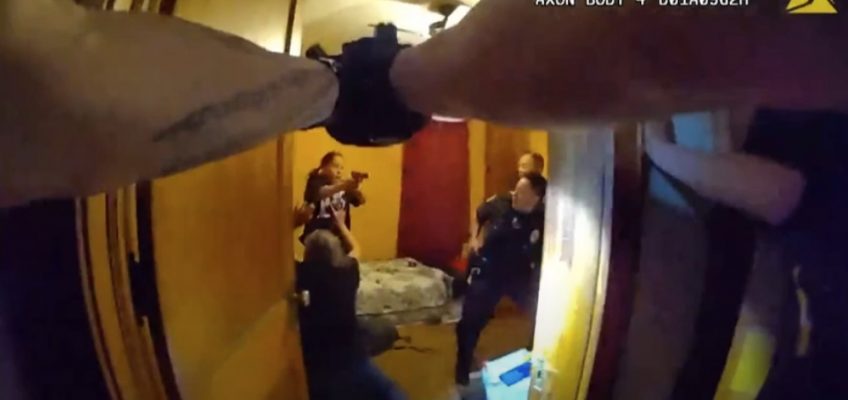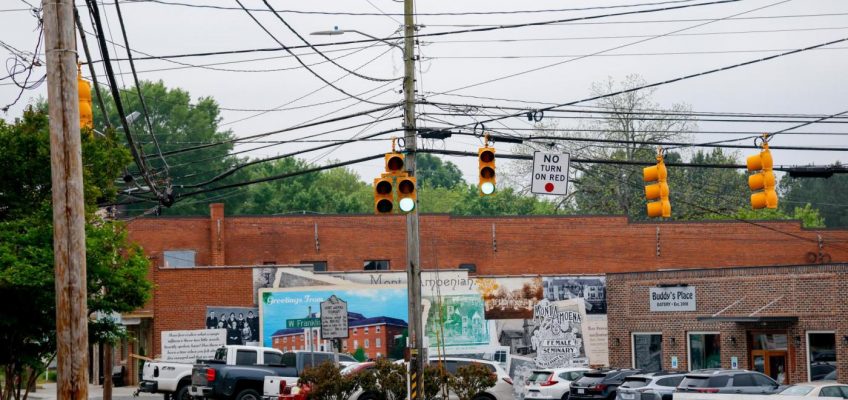By JIM MORRIS, CLAIRE RUSH and ROB GILLIES
VANCOUVER, British Columbia (AP) — A 30-year-old man was charged with multiple counts of murder in the deaths of 11 people who were killed when a car careened into a crowd at a Filipino heritage festival in Vancouver, and mourners including the Canadian prime minister remembered the dead at vigils across the city.
Kai-Ji Adam Lo, 30, was charged with eight counts of second-degree murder in a video appearance before a judge Sunday, hours after he was arrested at the scene, said Damienne Darby, spokeswoman for British Columbia prosecutors. Lo has not yet entered a plea.
Thirty-two people were taken to hospitals, and 17 were still there late Sunday, including some in critical and serious condition, the British Columbia Health Ministry said.
Investigators ruled out terrorism as a motive and said more charges were possible. They said Lo had a history of mental health issues.
An attorney for Lo was not listed in online court documents, and The Associated Press could not immediately reach an attorney representing him.
Those killed were between the ages of 5 and 65, officials said. Dozens of people were injured, some critically, when the black Audi SUV sped down a closed street just after 8 p.m. Saturday and struck people attending the Lapu Lapu Day festival.
Nathaly Nairn and her 15-year-old daughter carried flowers to one of the vigils. They attended the festival on Saturday, and Nairn recounted seeing the damaged SUV and bodies on the ground.
“Something really dark happened last night,” Nairn said as she and her daughter wiped away tears.
While attending a vigil, Vancouver Mayor Kenneth Sim said the Filipino community and the city were “heartbroken, were sad, were scared and there’s a bit of anger there, too.”
Mental health may have been a factor, Sim said.
“We do have people with significant mental health challenges who shouldn’t be directing their own care on the streets, where they can do harm to themselves and others,” he said. “So we have to get to the root cause of that problem as well.”
Interim Police Chief Steve Rai called it “the darkest day in Vancouver’s history.” There was no indication of a motive, but Rai said the suspect has “a significant history of interactions with police and health care professionals related to mental health.”
Video of the aftermath showed the dead and injured along a narrow street in South Vancouver lined by food trucks. The front of the Audi SUV was smashed in.
Kris Pangilinan, who brought his pop-up clothing and lifestyle booth to the festival, saw the vehicle roll slowly past a barricade before the driver accelerated in an area packed with people after a concert. He said hearing the sounds of people screaming and bodies hitting the vehicle will never leave his mind.
“He slammed on the gas, barreled through the crowd,” Pangilinan said. “It looked like a bowling ball hitting bowling pins and all the pins are flying into the air.”
Investigators were collecting evidence at the scene Monday and had executed a search warrant at a Vancouver property, police spokesperson Sgt. Steve Addison said. Investigators were also going through bystander video from the scene.
“Nobody anticipated that this would happen,” said Addison, adding that the unpredictability of this kind of behavior makes it difficult to police against. Officials will review the situation and it may change how they approach events like this.
“This was intended to be a safe, fun family-friendly community block party for people to celebrate their community and culture,” Addison said. “The actions of one person stole that away from them.”
Suspect detained by bystanders
Rai said the suspect was arrested after initially being apprehended by bystanders.
Video circulating on social media showed a young man in a black hoodie with his back against a chain-link fence, alongside a security guard and surrounded by bystanders screaming and swearing at him.
“I’m sorry,” the man said, holding his hand to his head. Rai declined to comment on the video.
Canadian Prime Minister Mark Carney visited Sunday, a day before a national election. He canceled his first campaign event and two major rallies on the final day of the campaign before the country votes on Monday.
“Last night families lost a sister, a brother, a mother, father, son or a daughter. Those families are living every family’s nightmare,” Carney said. He joined British Columbia Premier David Eby and community leaders Sunday evening in Vancouver.
Carney posted a photo of himself on X lighting a candle at a makeshift memorial near the scene of the attack.
The assault was reminiscent of an attack in 2018, when a man used a van to kill 10 pedestrians in Toronto.
Witnesses describe leaping out of the way
Carayn Nulada said that she pulled her granddaughter and grandson off the street and used her body to shield them from the SUV. She said her daughter made a narrow escape.
“The car hit her arm, and she fell down, but she got up, looking for us, because she is scared,” said Nulada, who described children screaming and victims lying on the ground or wedged under vehicles.
“I saw people running, and my daughter was shaking,” Nulada said.
Related Articles
In first 100 days, Trump struggles to make good on promises to quickly end Ukraine and Gaza wars
Major power outage in Spain and Portugal knocks out subway networks, traffic lights and ATM machines
Canadians vote in an election dominated by Trump’s trade war and bluster
Conclave to elect a new pope will start on May 7 as cardinals get to know one another
Russia declares a 72-hour ceasefire in Ukraine for next week to mark Victory Day in World War II
Nulada was at Vancouver General Hospital on Sunday morning, trying to learn about her brother, who was run down in the attack and suffered multiple broken bones.
Doctors identified him by presenting the family with his wedding ring in a pill bottle and said that he was stable but would need surgery.
James Cruzat, a Vancouver business owner, was at the celebration and heard a car rev its engine and then “a loud noise, like a loud bang” that he initially thought might be a gunshot.
“We saw people on the road crying. Others were like running, shouting or even screaming, asking for help,” Cruzat said.
Vincent Reynon, 17, was leaving the festival when he saw police rushing in. People were crying, and he saw scattered bodies. “It was like something straight out of a horror movie or a nightmare,” he said.
Adonis Quita said when he saw the SUV ramming through the crowd, his first reaction was to drag his 9-year-old son out of the area. The boy kept saying “I’m scared, I’m scared,” Quita recalled. Later they prayed together.
His son just relocated to Vancouver from the Philippines with his mother to reunite with Quita, who has lived here since 2024. Quita said he worries the child will struggle to adjust to life in Canada after witnessing the horrific event.
Filipino community was honoring a national hero
Vancouver had more than 38,600 residents of Filipino heritage in 2021, representing 5.9% of the city’s total population, according to Statistics Canada, the agency that conducts the national census.
Lapu Lapu Day celebrates Datu Lapu-Lapu, an Indigenous chieftain who stood up to Spanish explorers who came to the Philippines in the 16th century. The organizers of the Vancouver event, which was in its second year, said he “represents the soul of native resistance, a powerful force that helped shape the Filipino identity in the face of colonization.”
Eby said the province will not let the tragedy define the celebration. He urged people to channel their rage into helping those affected.
“I don’t think there is a British Columbian that hasn’t been touched in some way by the Filipino community,” he said. “You can’t go to a place that delivers and not meet a member of that community in the long-term care home or hospitals, childcare or schools. This is a community that gives and gives and yesterday was a celebration of their culture.”
Philippine President Ferdinand Marcos Jr. issued a statement saying that the Philippine Consulate in Vancouver would work with Canadian authorities to ensure the attack is thoroughly investigated, and that the victims and their families are supported.
Gillies reported from Toronto. Associated Press journalists Manuel Valdes and Lindsey Wasson in Vancouver; Teresa Cerojano in Manila, Philippines; Christopher Weber in Los Angeles; and Hannah Schoenbaum in Salt Lake City, Utah, contributed to this report.




